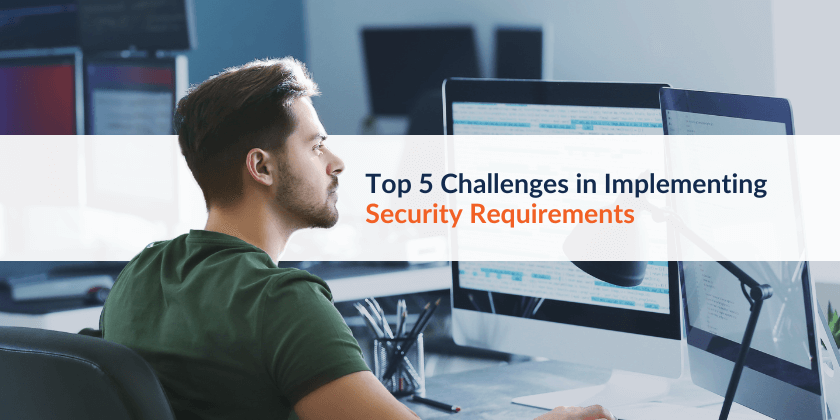Security requirements are meant to help safeguard applications from vulnerabilities, yet implementing them at scale remains a challenge in the tech industry. Many organizations struggle with integration, scalability, and developer adoption, leading to security gaps and compliance issues.
In this article, we’ll break down the five biggest challenges in implementing security requirements and provide practical solutions that organizations can adopt.
1. Lack of Clarity in Security Requirements
The Challenge:
Many teams lack a well-defined, standardized set of security requirements. This results in inconsistencies, confusion, and overlooked risks, especially when different teams follow different approaches.
The Solution:
- Use industry-recognized security frameworks like NIST, ISO, or OWASP ASVS to establish a clear security baseline.
- Leverage SD Elements or similar platforms to map security requirements to industry standards, ensuring team consistency.
Key Takeaway: Developers are left guessing without clearly defined security requirements. Mapping requirements to established frameworks removes ambiguity and ensures alignment.
2. Security as an Afterthought in Development
The Challenge:
Security is often treated as a last-minute checklist item, leading to vulnerabilities being discovered late in the development cycle or even missed completely. This results in expensive rework, project delays, and an increased risk of security incidents.
The Solution:
- Shift security left by embedding security requirements early in the SDLC.
- Automate security validation in CI/CD pipelines to catch issues before deployment.
- Use security requirement tools that integrate directly into development environments.
Key Takeaway: Security implemented late is costly and inefficient. Embedding security requirements from day one reduces rework and helps prevent vulnerabilities.
3. Resistance from Developers & Product Teams
The Challenge:
Developers often see security as extra work that slows down the development process. Many lack proper training on security best practices, leading to pushback when security requirements are introduced.
The Solution:
- Make security developer-friendly by integrating requirements seamlessly into their existing workflows.
- Provide just-in-time security training tied to specific coding tasks and security requirements.
- Use automation and AI-powered guidance to make security requirements easier to understand and implement.
Key Takeaway: Developers prioritize speed. Adopting rates improve significantly if security is frictionless and built into their workflow.
4. Scaling Across Teams & Business Units
The Challenge:
Security requirements often vary across teams and business units, making it difficult to ensure organization-wide consistency. Lack of governance results in gaps, non-compliance, and increased risk exposure.
The Solution:
- Standardize security requirements enterprise-wide using a centralized system like SD Elements.
- Establish governance policies with automated enforcement to ensure compliance.
- Implement role-based access so different teams have tailored security guidance based on their responsibilities.
Key Takeaway: Security must scale beyond a single team. Standardizing security requirements helps to ensure uniform implementation across the organization.
5. Proving Compliance & Traceability
The Challenge:
Security teams struggle to track whether security requirements are actually being met. This lack of visibility makes audits difficult and creates compliance risks, especially for organizations dealing with strict regulatory requirements.
The Solution:
- Use automated tracking and reporting tools to monitor compliance in real-time.
- Generate audit-ready reports to prove adherence to security standards.
- Ensure that security controls are continuously monitored and updated to stay ahead of evolving threats.
Key Takeaway: Without visibility, security becomes a guessing game. Automated tracking and reporting eliminate uncertainty and ensure compliance.
Conclusion: Security Requirements Done Right
Implementing security requirements isn’t just about checking a box—it’s about making them actionable, scalable, and measurable. Organizations that fail to address these five challenges risk security gaps, compliance failures, and costly security incidents.
By leveraging platforms like SD Elements, companies can streamline security implementation, automate compliance tracking, and reduce developer friction, ultimately strengthening their security posture.
📢 Want to learn more? Join us for an in-depth discussion where we’ll explore these challenges and solutions in greater detail.

